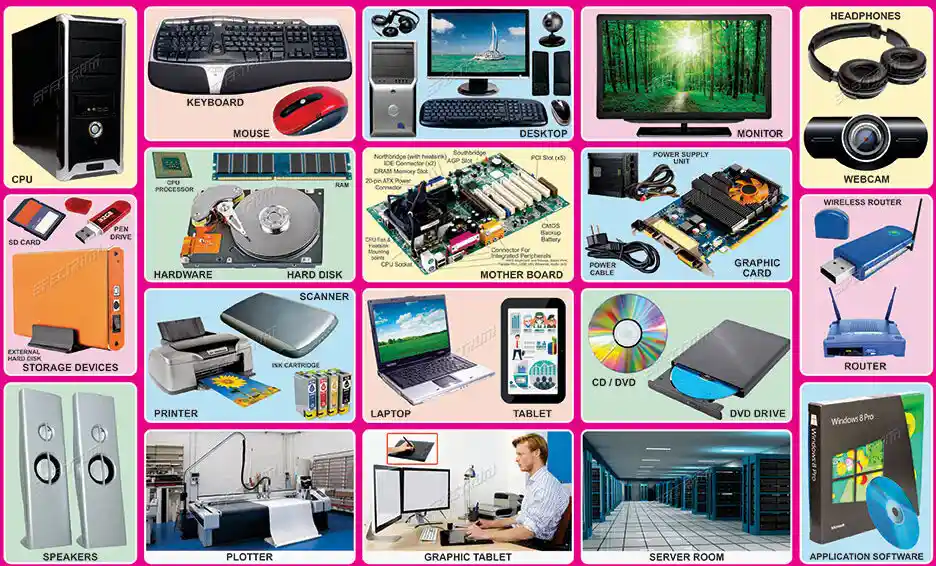Computer hardware refers to the physical components of a computer system that can be touched and seen. It’s the tangible equipment that makes up a computer, including its internal and external parts. The internal components, often housed within a case, include the central processing unit (CPU), which is the brain of the computer responsible for performing calculations and instructions; the motherboard, which connects all the components together; random access memory (RAM), which stores temporary data while the computer is in use; the hard disk drive (HDD) or solid-state drive (SSD), which stores data permanently; and the graphics processing unit (GPU), which handles visual output.

External components, such as the monitor, keyboard, mouse, printer, and speakers, allow users to interact with the computer and receive output. These hardware components work together to enable a computer to perform various tasks, from simple calculations to complex computations and multimedia processing.
Types of computer hardware
Computer hardware can be categorized into several types based on their functions:
Input Devices: These devices allow users to enter data into the computer. Examples include keyboards, mice, scanners, webcams, microphones, and joysticks.
Output Devices: These devices display or present the processed data to the user. Examples include monitors, printers, speakers, and projectors.
Storage Devices: These devices store data permanently or temporarily. Examples include hard disk drives (HDDs), solid-state drives (SSDs), flash drives, optical drives (CD/DVD), and cloud storage.
Processing Devices: These devices perform calculations and execute instructions. The central processing unit (CPU) is the primary processing device.
Internal Components: These devices are housed inside the computer case. Examples include the motherboard, which connects all the components together; the power supply unit (PSU), which provides power to the system; and expansion cards, such as graphics cards and sound cards.
External Components: These devices are connected to the computer externally. Examples include external hard drives, printers, scanners, and external speakers.
Networking Devices: These devices enable communication between computers and networks. Examples include routers, modems, and network cables.
Specialized Devices: These devices are designed for specific purposes. Examples include gaming consoles, digital cameras, and medical imaging equipment.

